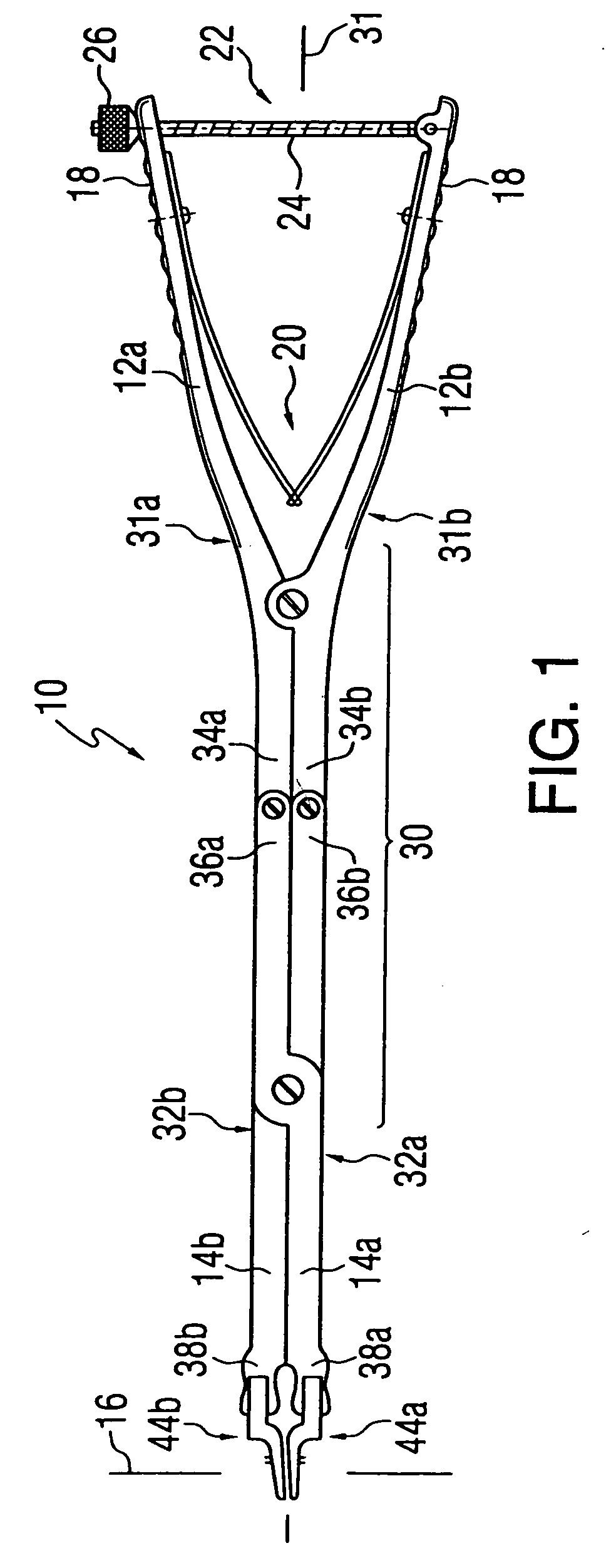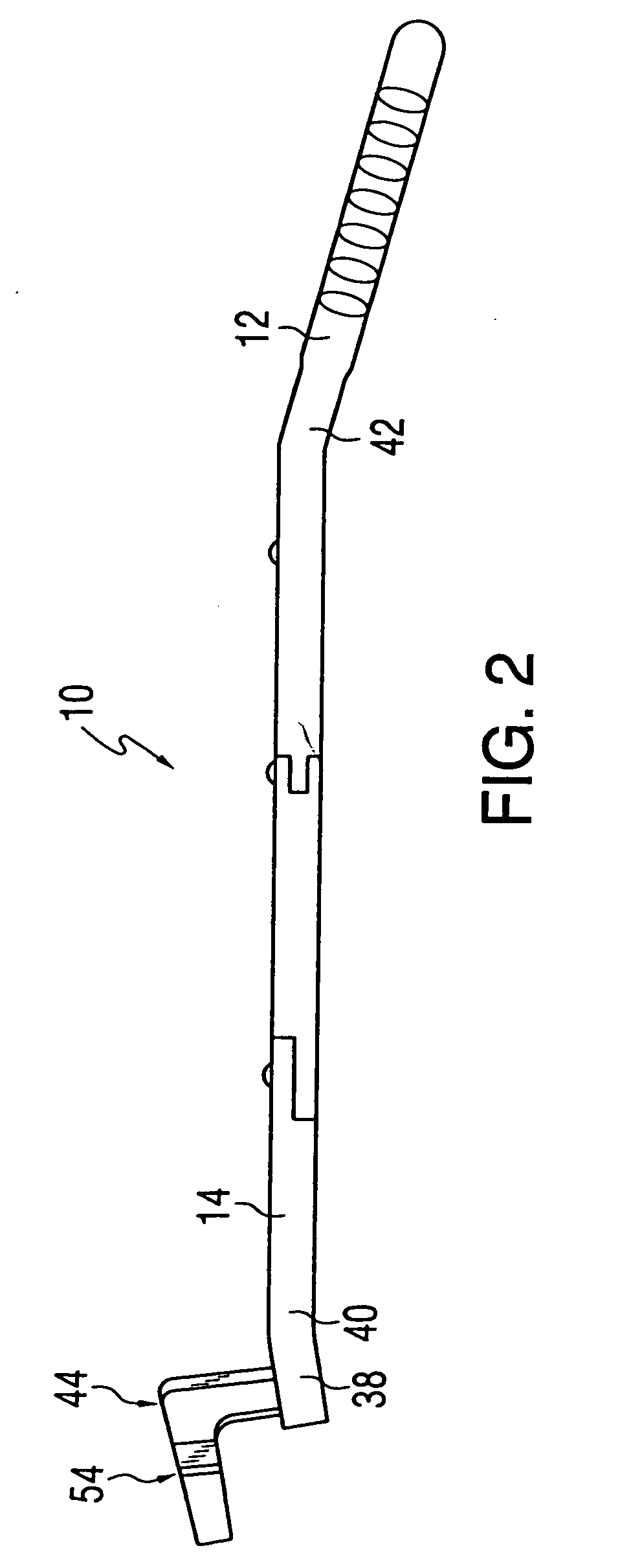Spinal disc space distractor
a distractor and spine disc technology, applied in the field of spine disc distractors, can solve the problems of difficulty in restoring the natural disc height, damage to the vertebrae or the vertebral endplate at the insertion site, and the risk of breaking of allograft products and so as to reduce the risk of breaking of allograft implants and other cages made from brittle materials during insertion, and the effect of correct placement of implants
- Summary
- Abstract
- Description
- Claims
- Application Information
AI Technical Summary
Benefits of technology
Problems solved by technology
Method used
Image
Examples
Embodiment Construction
[0032] In accordance with the principles of the present invention, a distractor 10 is provided with a pair of handles 12a, 12b movable with respect to each other to actuate a pair of jaws 14a, 14b coupled thereto, as shown in FIG. 1. Although distractor 10 may be used for a variety of procedures, a preferred procedure for which distractor 10 is used is spinal disc distraction. Thus, distractor 10 is preferably configured such that actuation of handles 12 (12a, 12b) moves jaws 14 (14a, 14b) apart substantially along distraction axis 16 to a working position corresponding to the desired resulting relative position of the endplates. For example, the blades may be moved to a substantially parallel or lordotic position to separate adjacent vertebrae to be treated.
[0033] In order to be optimally useful for use in an anterior approach, handles 12 and jaws 14 are configured to move jaws 14 apart along distraction axis 16 a sufficient amount to adequately separate adjacent vertebrae to be t...
PUM
 Login to View More
Login to View More Abstract
Description
Claims
Application Information
 Login to View More
Login to View More - R&D
- Intellectual Property
- Life Sciences
- Materials
- Tech Scout
- Unparalleled Data Quality
- Higher Quality Content
- 60% Fewer Hallucinations
Browse by: Latest US Patents, China's latest patents, Technical Efficacy Thesaurus, Application Domain, Technology Topic, Popular Technical Reports.
© 2025 PatSnap. All rights reserved.Legal|Privacy policy|Modern Slavery Act Transparency Statement|Sitemap|About US| Contact US: help@patsnap.com



